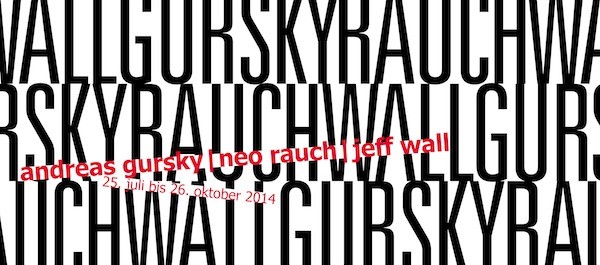Andreas Gursky, Neo Rauch, Jeff Wall
25 Jul - 26 Oct 2014
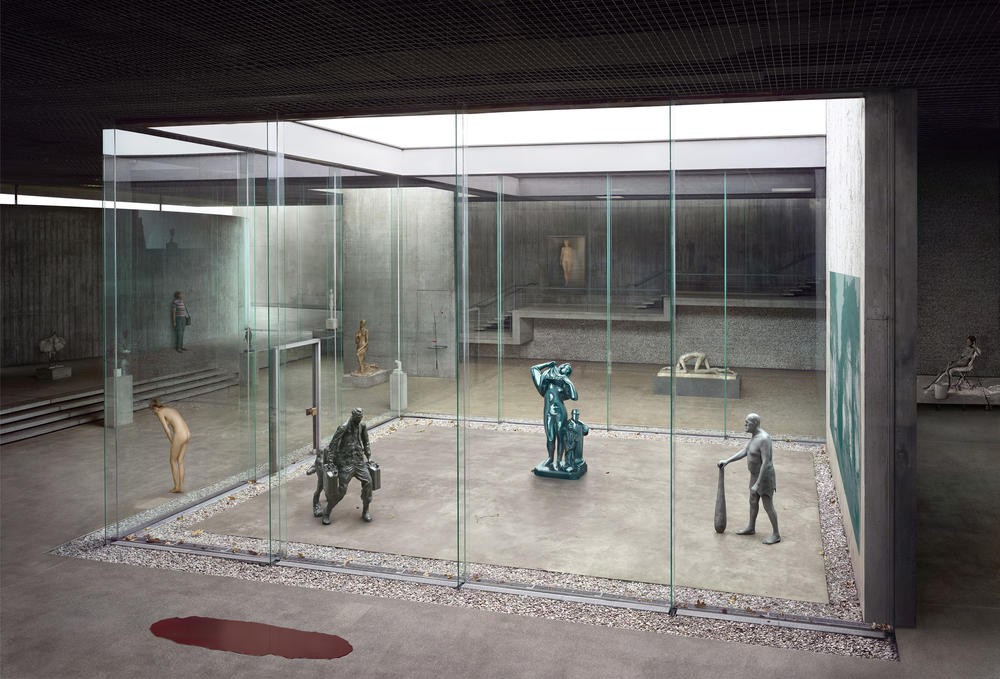
Andreas Gursky, Lehmbruck I, 2013
Inkjet Print, 249 x 357 x 6.2 cm
© 2014 Andreas Gursky, VG BILD-KUNST, Bonn / Artists Rights Society (ARS), New York
Courtesy Sprüth Magers Berlin London
Inkjet Print, 249 x 357 x 6.2 cm
© 2014 Andreas Gursky, VG BILD-KUNST, Bonn / Artists Rights Society (ARS), New York
Courtesy Sprüth Magers Berlin London

Neo Rauch, Schach, 2012
Ink pen, felt tip pen, crayon on paper, 21 x 29.6 cm
Private collection
© VG Bild-Kunst, Bonn 2014
Courtesy Galerie EIGEN + ART Leipzig/Berlin, David Zwirner, New York/London
Photo: Uwe Walter, Berlin
Ink pen, felt tip pen, crayon on paper, 21 x 29.6 cm
Private collection
© VG Bild-Kunst, Bonn 2014
Courtesy Galerie EIGEN + ART Leipzig/Berlin, David Zwirner, New York/London
Photo: Uwe Walter, Berlin
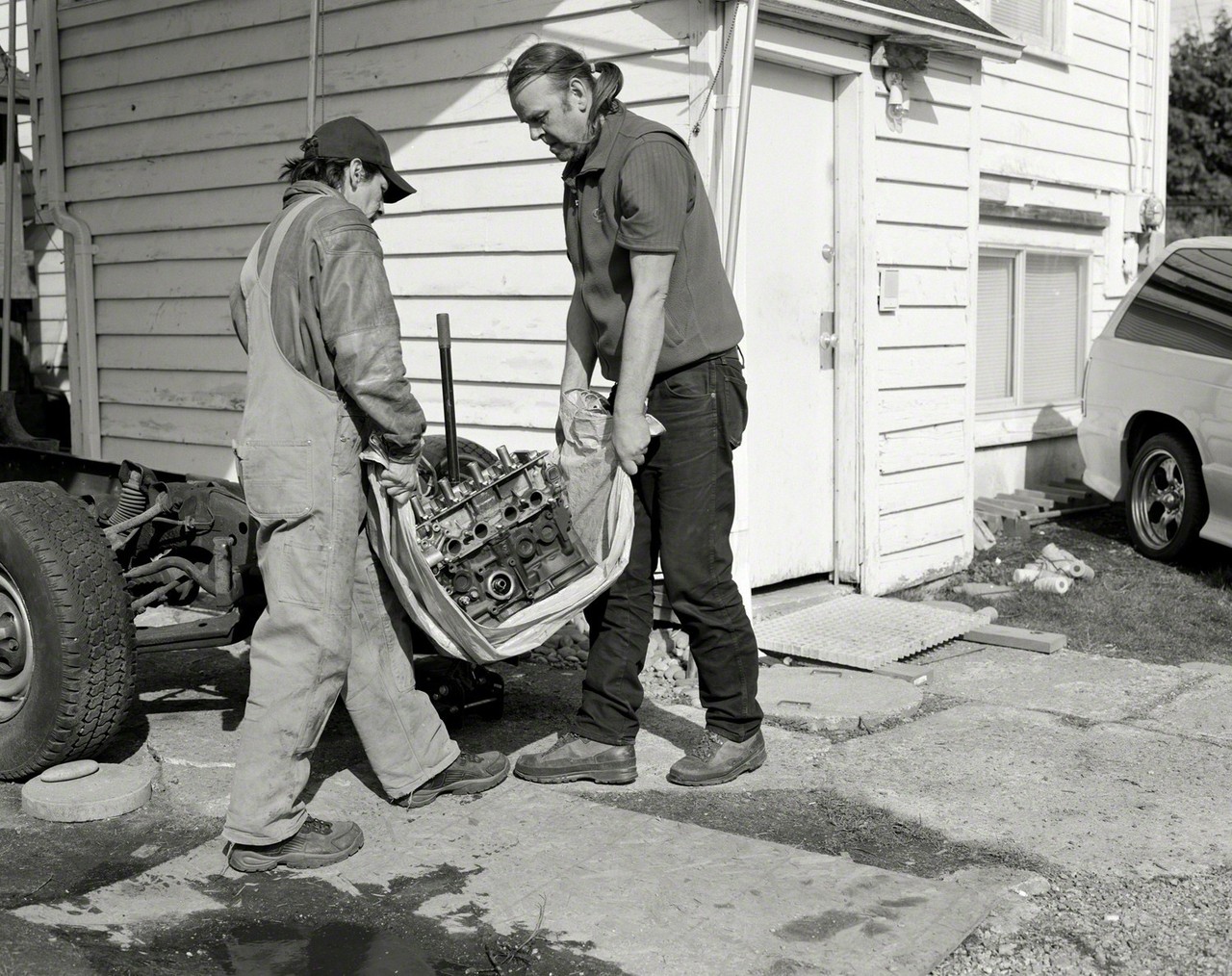
Jeff Wall, Men move an engine block, 2008
Silver gelatin print, 138.5 x 176.5 cm
Courtesy of the artist
Silver gelatin print, 138.5 x 176.5 cm
Courtesy of the artist

Installationsansicht »Andreas Gursky, Neo Rauch, Jeff Wall«
kestnergesellschaft 2014
Foto: Raimund Zakowski
kestnergesellschaft 2014
Foto: Raimund Zakowski
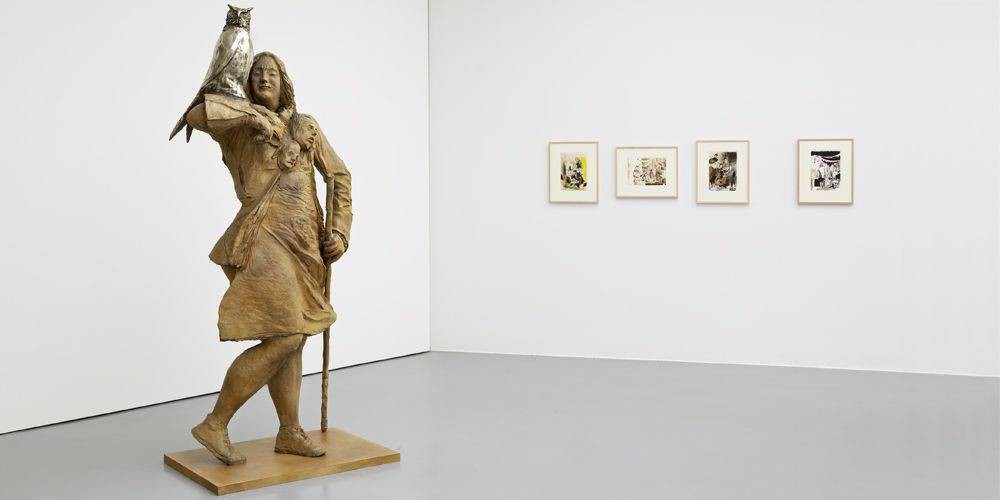
Installationsansicht »Andreas Gursky, Neo Rauch, Jeff Wall«
kestnergesellschaft 2014
Foto: Raimund Zakowski
kestnergesellschaft 2014
Foto: Raimund Zakowski

Installationsansicht »Andreas Gursky, Neo Rauch, Jeff Wall«
kestnergesellschaft 2014
Foto: Raimund Zakowski
kestnergesellschaft 2014
Foto: Raimund Zakowski
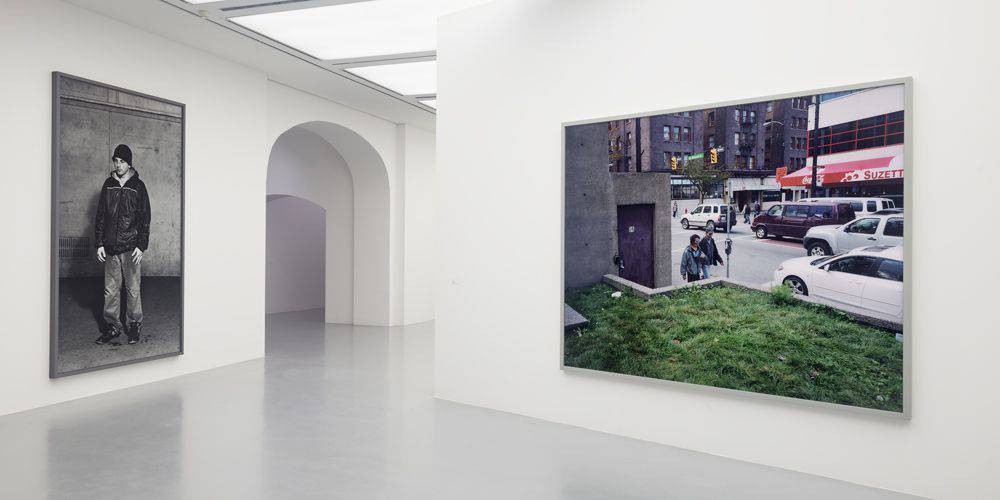
Installationsansicht »Andreas Gursky, Neo Rauch, Jeff Wall«
kestnergesellschaft 2014
Foto: Raimund Zakowski
kestnergesellschaft 2014
Foto: Raimund Zakowski
ANDREAS GURSKY, NEO RAUCH, JEFF WALL
25 July – 26 October 2014
Three of today’s most important artists will meet for the first time at the kestnergesellschaft: the photographers Andreas Gursky (*1955) and Jeff Wall (*1946) and the painter Neo Rauch (*1960). Connections between their wide-ranging oeuvres form the point of departure for this unusual encounter. Select works show how the three artists engage with, push forward and rethink the tradition of the figurative picture, each in their own way.
Even though no paintings will be featured in the exhibition, as a common field of ideas it establishes important reference points for the works on display by Gursky, Rauch and Wall. All three artists use other media to continue, reshape and present methods, categories and conventions that are traditionally associated with painting, as in Rauch’s drawings and sculptures or in Gursky and Wall’s large-format photographs. Arranged in the exhibition as a visual experiment, these independent works develop the potential for unexpected discoveries, contrasts and references. This opens up a broad spectrum of possibilities for pictorial representation, ranging from the documentary and the cinematographic to fantastical combinations, unreal constructions and formal abstraction.
Two thematic strands in the exhibition emerge from the two new Lehmbruck works (2013 and 2014) by Andreas Gursky. Using techniques of digital photomontage, Gursky filled the modernist exhibition spaces of the Lehmbruck Museum in Duisburg with an imaginary collection of contemporary artworks, including an illuminated transparency by Jeff Wall and a sculpture by Neo Rauch that can also be seen in the exhibition. On the one hand, it is the idea of a collection of images that is invoked here in a sober look at the institution of the museum, whose mission of conserving selected works is inseparable from a sovereignty of interpretation: Who decides what will be preserved and exhibited? On the other hand, it is the representation of the human figure that is presented in the Lehmbruck works as a central theme of involvement with the pictorial.
Two other photographs by Gursky that are presented in Germany for the first time, interpret Hollywood comic-book heroes against idealized landscapes, while in other works the individual is subject to a strict choreography or disappears in the supremacy of the collective. Digitally constructed from many individual images, Gursky’s monumental photographs often follow a formal structure and solidify into pictures that exaggerate the visible into the absolute.
Instead of Neo Rauch’s famous paintings, an extensive portfolio of drawings and two sculptures will be shown that have so far only been presented rarely. In their spontaneity, the drawings are fleeting testimonies to internalized images that are recorded on paper without being filtered. Couples or small groups of figures, entangled in impenetrable combinations, awkward heroes and fabulous creatures, fantastic metamorphoses, dreamlike visions and comical collisions—time and again it is the apparently disparate that Rauch brings together in these improvisations. Like the drawings, the two life-size bronze sculptures Die Jägerin (2011) and Nachhut (2011) are formulations of a pictorial vocabulary that is informed by painting in other media.
Jeff Wall’s photographs develop between the poles of the cinematographic and what the artist calls the “near-documentary.” The exhibition focuses on large-format black-and-white and color prints from recent years. In these works Wall continues his involvement with realism and increasingly takes up documentary approaches. The photographs direct the gaze to the supposedly unspectacular, to dismal antiheroes and unprivileged figures engaged in banal activities. They appear to follow the accidental aesthetic of a socially motivated street photography, but they are consciously composed, staged or reenacted scenes that freeze the everyday into pictures of superior significance.
25 July – 26 October 2014
Three of today’s most important artists will meet for the first time at the kestnergesellschaft: the photographers Andreas Gursky (*1955) and Jeff Wall (*1946) and the painter Neo Rauch (*1960). Connections between their wide-ranging oeuvres form the point of departure for this unusual encounter. Select works show how the three artists engage with, push forward and rethink the tradition of the figurative picture, each in their own way.
Even though no paintings will be featured in the exhibition, as a common field of ideas it establishes important reference points for the works on display by Gursky, Rauch and Wall. All three artists use other media to continue, reshape and present methods, categories and conventions that are traditionally associated with painting, as in Rauch’s drawings and sculptures or in Gursky and Wall’s large-format photographs. Arranged in the exhibition as a visual experiment, these independent works develop the potential for unexpected discoveries, contrasts and references. This opens up a broad spectrum of possibilities for pictorial representation, ranging from the documentary and the cinematographic to fantastical combinations, unreal constructions and formal abstraction.
Two thematic strands in the exhibition emerge from the two new Lehmbruck works (2013 and 2014) by Andreas Gursky. Using techniques of digital photomontage, Gursky filled the modernist exhibition spaces of the Lehmbruck Museum in Duisburg with an imaginary collection of contemporary artworks, including an illuminated transparency by Jeff Wall and a sculpture by Neo Rauch that can also be seen in the exhibition. On the one hand, it is the idea of a collection of images that is invoked here in a sober look at the institution of the museum, whose mission of conserving selected works is inseparable from a sovereignty of interpretation: Who decides what will be preserved and exhibited? On the other hand, it is the representation of the human figure that is presented in the Lehmbruck works as a central theme of involvement with the pictorial.
Two other photographs by Gursky that are presented in Germany for the first time, interpret Hollywood comic-book heroes against idealized landscapes, while in other works the individual is subject to a strict choreography or disappears in the supremacy of the collective. Digitally constructed from many individual images, Gursky’s monumental photographs often follow a formal structure and solidify into pictures that exaggerate the visible into the absolute.
Instead of Neo Rauch’s famous paintings, an extensive portfolio of drawings and two sculptures will be shown that have so far only been presented rarely. In their spontaneity, the drawings are fleeting testimonies to internalized images that are recorded on paper without being filtered. Couples or small groups of figures, entangled in impenetrable combinations, awkward heroes and fabulous creatures, fantastic metamorphoses, dreamlike visions and comical collisions—time and again it is the apparently disparate that Rauch brings together in these improvisations. Like the drawings, the two life-size bronze sculptures Die Jägerin (2011) and Nachhut (2011) are formulations of a pictorial vocabulary that is informed by painting in other media.
Jeff Wall’s photographs develop between the poles of the cinematographic and what the artist calls the “near-documentary.” The exhibition focuses on large-format black-and-white and color prints from recent years. In these works Wall continues his involvement with realism and increasingly takes up documentary approaches. The photographs direct the gaze to the supposedly unspectacular, to dismal antiheroes and unprivileged figures engaged in banal activities. They appear to follow the accidental aesthetic of a socially motivated street photography, but they are consciously composed, staged or reenacted scenes that freeze the everyday into pictures of superior significance.

